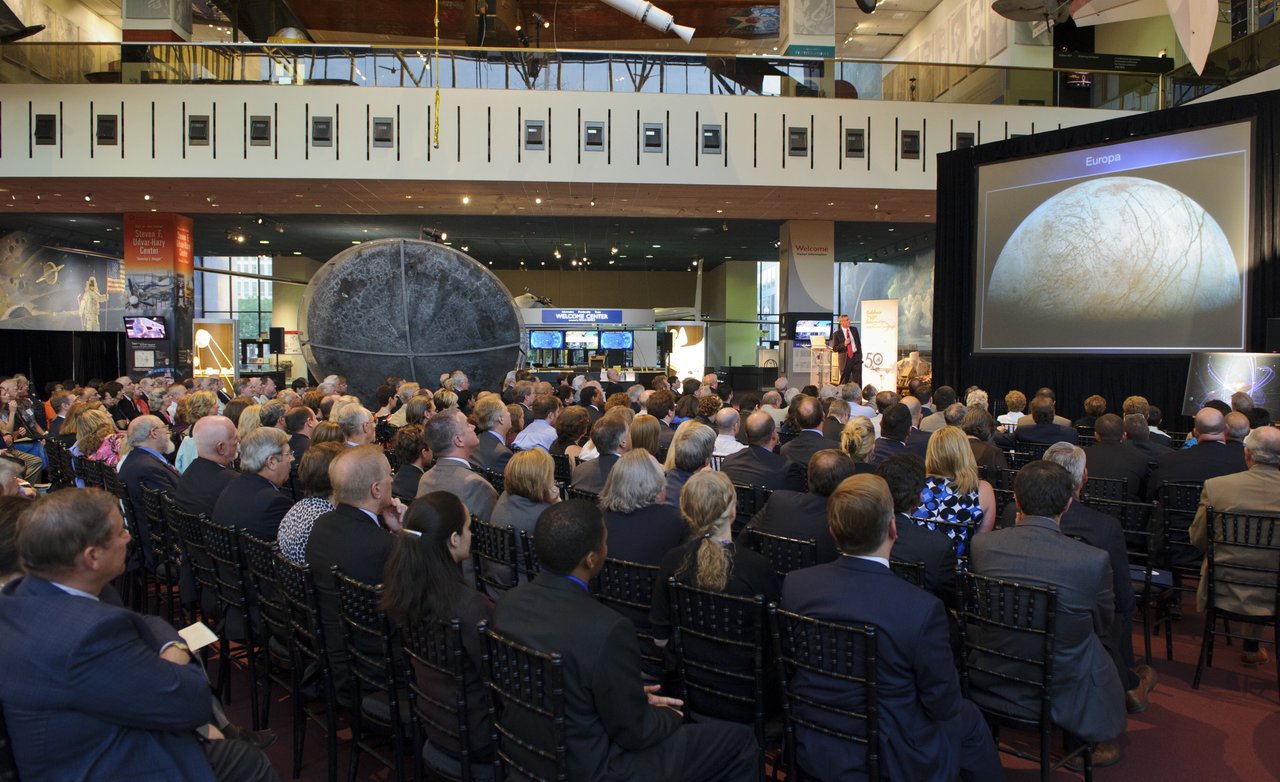News | August 9, 2011
Power to Explore: 50 Years of Nuclear Space Power

Dr. Steve Squyres delivers the keynote talk at the 50th anniversary of the first Nuclear Space Flight event, June 29, 2011, in the NASM Milestones of Flight gallery.
On June 29th, 2011 NASA and the Smithsonian National Air and Space Museum in Washington, DC, held an event to commemorate both the launch of the first nuclear space power system, and to recognize the several decades of discovery that radioisotope power systems have enabled. Attendees honored nine of the engineers whose early work on these power systems helped to make exploring the entire breadth of the solar system a reality.
Marking a Milestone
On June 29, 1961, a SNAP-3B radioisotope powered generator, producing 2.7 watts of electrical power, was launched aboard the US Navy's Transit IV-A spacecraft. Following this event, the use of radioisotope power has extended humanity's reach across the solar system, enabling spacecraft to fly by and observe Jupiter, Saturn, Uranus and Neptune; to orbit and study the Sun, Jupiter and Saturn in greater detail; and to land on and collect local surface science data at the Moon and Mars. These scientific voyages have contributed greatly to humankind's understanding of the solar system in ways that our limited view from Earth previously would not allow. Beyond the successful use of radioisotope power, 50 years of development in space nuclear technologies has provided humanity the potential to enable even greater scientific and human discovery in the next 50 years.
Recognition of Great Achievements
Representatives from the Department of Energy (DOE) joined the space agency in celebrating decades of partnering to provide radioisotope power systems for space missions The event praised the contributions of those at NASA, DOE and many other institutions who have played a role in developing radioisotope power technologies for exploration. Several individual honorees for the event were presented with certificates, recognizing their achievements:
In recognition of your contribution to the past 50 years of Nuclear Space Flight achievements for the United States of America, the National Aeronautics and Space Administration thanks you for your dedication and commitment to mission success.
Individual Honorees:
- John H. Birden+ (DOE Mound Site, retired)
- Robert Carpenter (US Air Force, DOE, Orbital Science Corporation)
- Paul Dick (Martin Marietta, DOE Mound Site, Orbital Science Corporation)
- Donald Ofte (DOE Mound Site, retired)
- Donald Etter+ (DOE Mound Site, retired)
- James Hagan (Applied Physics Laboratory, retired)
- John Dassoulas (Applied Physics Laboratory)
- Robert Fischell+ (Applied Physics Laboratory)
- Peter Wilhelm+ (US Navy, retired)
Looking Back, and Rocketing Forward
In addition to the recognition of honorees, the event program included the unveiling of a new piece of artwork by space artist Pat Rawlings. The digital painting, entitled "Power to Explore" depicts the missions that have allowed humanity to explore the solar system using the power of the atom. The painting was accepted by the Smithsonian National Air and Space Museum.
Dr. Steve Squyres, planetary scientist and Chair of the National Research Council Planetary Science Decadal Survey 2013-2022, delivered the Keynote about the legacy of solar system exploration enabled by radioisotope power systems, and provided a look toward the exciting achievements the coming decades could bring.
+Honorees not in attendance at the event


